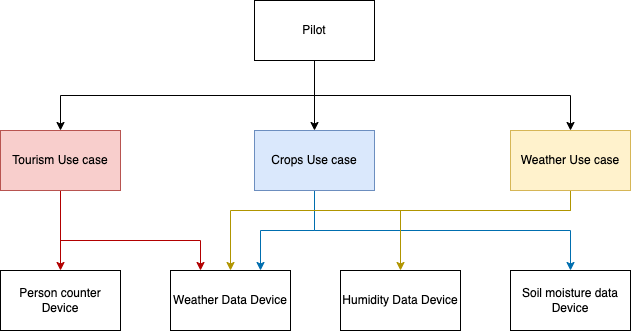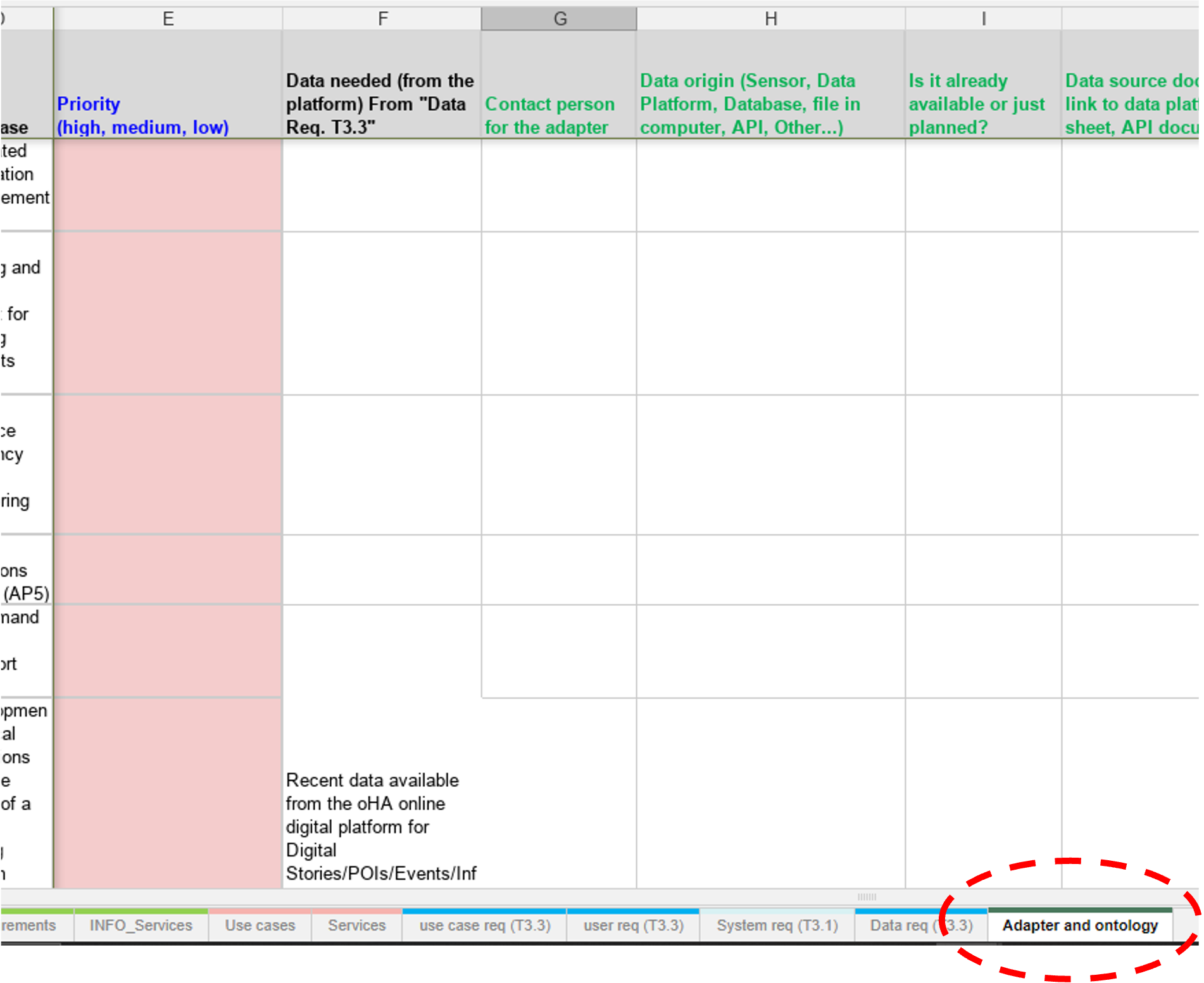Integration process – From data sources to interoperable semantic data
In this section, the basic steps to prepare your infrastructure for the integration with AURORAL will be explained. These points are a guide to indicate the process from describing semantically your infrastructure to the connection with the AURORAL Node, but the order of the steps is not completely strict.
1. Have the data according to the use cases
The pilots presented different use cases for AURORAL H2020.

These use cases use one or more data sources. Sometimes different use cases may use the same data source.

In this step, pilots must have well-identified their use cases and have well-recognized the different data sources.
2. Fill out the Excel
Once the data for your use cases are well-identified, pilots must fill out the requirements document (link).

It is important to divide each data source one by one, adding new rows in the Excel file if necessary. The columns are divided as explained below:
- Priority. The priority of the case. It can be i) High (the use case has a high priority and will be done first) ii) Medium (the use case has a medium priority and there is no short-term deadline) iii) Low (the use case has a low priority and is planned to be developed in the future).
- Data needed. What is the data for? For example, weather information, temperature information, data available of an activity, etc.
- Contact person for the adapter. Person to be contacted by the UPM to solve doubts about the data.
- Data origin. Where will the data be extracted from? For example, an API, database, sensor…
- Availability. Indicate if the data is available or planned.
- Data source documentation. The documentation of the data. For example, a link to the API documentation, the specification of the database, a sensor specification sheet.
- Permissions. Is the data read-only, write-only or both.
- Data format. The format of the data (JSON, CSV, XML…).
- Data license. If the data have a license, specify the license type.
3. Ontology development
To develop the ontology, the UPM team follow the Linked Open Terms (LOT) methodology. This methodology includes four activities: 1) ontology requirements specification, 2) ontology implementation, 3) ontology publication, and 4) ontology maintenance.
It has been used and refined in previous ontology development processes of the European projects VICINITY [3], BIMERR [4], DELTA [5], and COGITO [6] and has been adapted to the particularities of AURORAL.
In this step, pilots can be contacted by the UPM team to solve doubts about their data, or pilots can contact the UPM team to suggest changes. The ontology portal can be found in:
4. Choose and develop the adapter
In this step, pilots must choose an adapter and develop what is necessary for each adapter to fit their data. Pilots, in this step, can contact UPM or Bavenir to solve their doubts.
* bAvenir programatic adapter * UPM Semantic adapter
5. Install node
On this blog, there is a multitude of resources for install the node. Below are the most interesting resources:
* Get Started * Node Installation * Support for Windows users * Support for Raspberry users
6. Working with the node
Finally, once the ontology has been completed, an adapter has been developed, and the node has been installed, the pilot will be ready to operate in AURORAL.
These steps are the basic points to deploy and work in AURORAL. Once the pilot has completed the basics, if desired, the pilot can implement the advanced options of the node.
Brought to you by the AURORAL community, keep posted! 💪